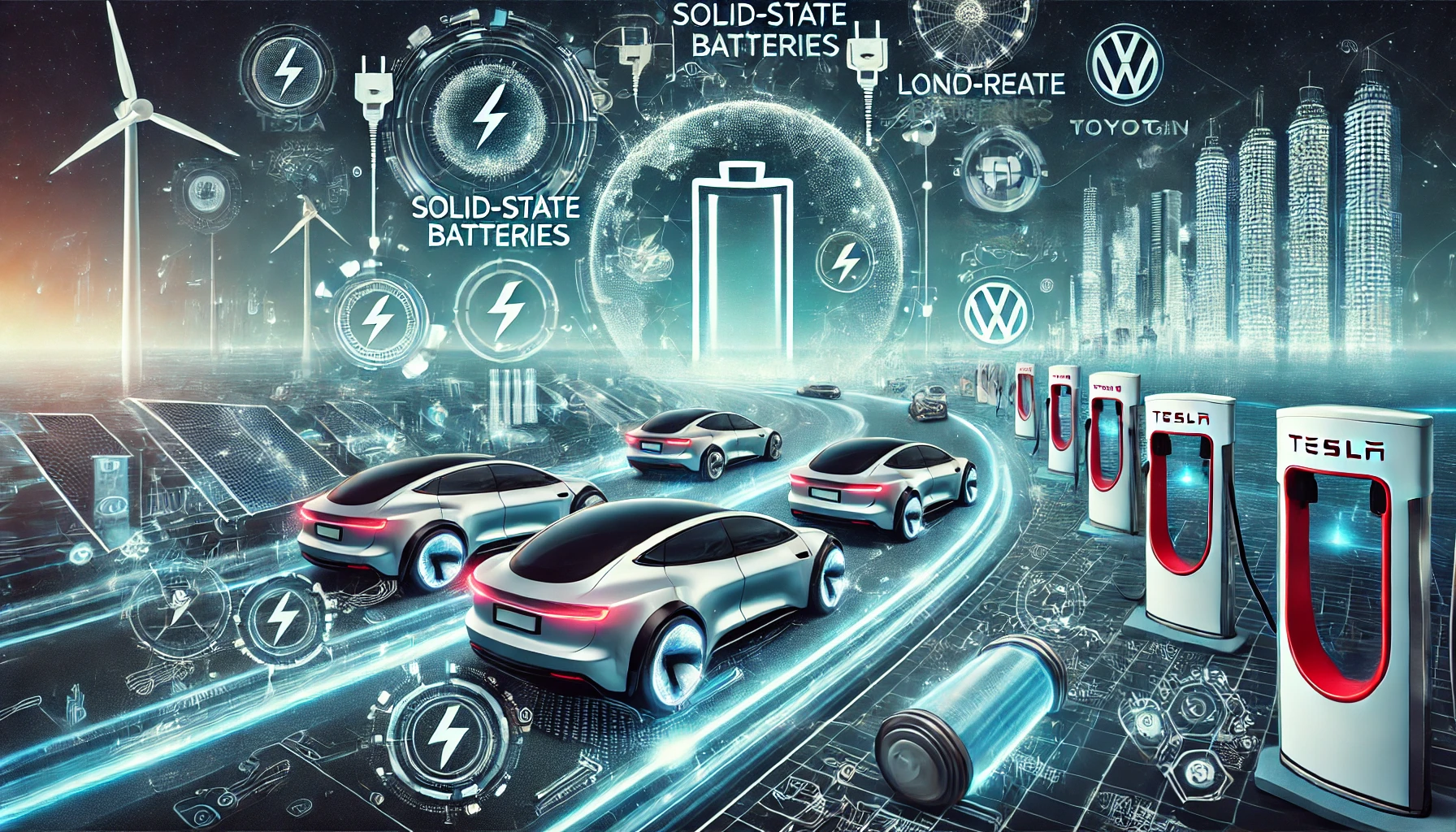The Race for Range: How Battery Innovation Will Define the Success of Electric Vehicles

Introduction: The Electric Car Revolution – Charged Up and Ready to Go
The electric vehicle (EV) revolution is well underway, but there’s one factor holding it back from true domination: battery technology. Sure, electric cars are clean, cool, and quieter than a whispering librarian, but without the right battery, they're like Superman without his cape. So, how are companies tackling the issue of range anxiety while aiming to lower costs? Well, it turns out battery innovation is the key. In this article, we’ll dive into the nuts and bolts of the latest advancements in EV batteries – from solid-state technology to fast charging, and beyond.
Solid-State Batteries: The Game-Changer We’ve Been Waiting For
Solid-state batteries are considered the holy grail of EV technology. Instead of the liquid electrolytes found in traditional lithium-ion batteries, solid-state batteries use, you guessed it, a solid material. This switch isn’t just a fancy upgrade – it means more energy can be stored in the same amount of space, allowing for longer ranges. These batteries are also less likely to catch fire (a plus when you're driving a car!). Toyota and Volkswagen are leading the charge (pun intended), with solid-state technology expected to roll out in the next few years. While these innovations sound great on paper, the question remains: will they be cost-effective for mass-market production?
Fast Charging: Can We Zap Our Way to Instant Power?
Imagine pulling up to a charging station, plugging in your EV, and getting a full charge in less time than it takes to watch a YouTube video about cats. That’s the dream behind fast charging technology, and it’s closer than you think. Companies like Tesla and Porsche are at the forefront of this race, introducing superchargers that can give you hundreds of miles in mere minutes. But here’s the catch: fast charging puts extra strain on the battery, potentially reducing its lifespan. It’s a delicate balancing act between speed and longevity. But with advancements in battery cooling systems and energy management, we may soon see fast charging without the drawbacks.
Range vs. Cost: Striking the Perfect Balance
At the heart of battery innovation is the eternal struggle between increasing range and lowering costs. Sure, we’d all love a Tesla that could drive coast-to-coast on a single charge, but not if it costs as much as a private jet. Companies are now focusing on finding materials that are both abundant and affordable. Lithium-ion remains the dominant battery material, but research is underway into alternatives like silicon and even seawater (yes, really!). Chinese companies like CATL are at the forefront of these cost-saving innovations. If successful, these developments could finally make EVs affordable for the masses without sacrificing performance.
The Impact on Mass EV Adoption
With all these advancements, the future of electric vehicles looks bright – and longer-lasting. But it's not just about the technology; it’s about how these innovations affect consumer adoption. The more affordable and reliable EVs become, the more likely it is that people will ditch their gas-guzzlers for greener alternatives. Governments around the world are also offering incentives to promote EV adoption, which, combined with technological breakthroughs, could finally push EVs into the mainstream. Automakers like Ford, General Motors, and startups like Rivian are all betting big on a battery-powered future.
Conclusion: Are We There Yet?
So, are we on the verge of the electric vehicle takeover? The answer is complicated. Battery technology has come a long way, but there’s still room for improvement. Solid-state batteries, fast charging, and more affordable materials are all part of the equation, but they haven’t yet hit the mass market. The question remains: can automakers balance range, cost, and convenience in a way that convinces the average driver to make the switch to electric? Only time will tell, but one thing’s for sure – the race for range is heating up.



